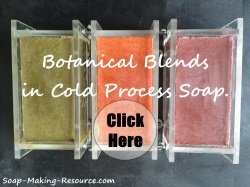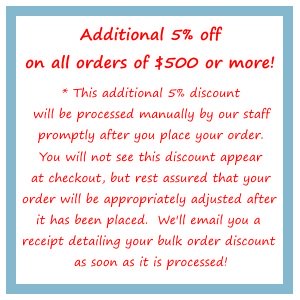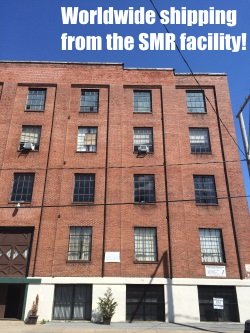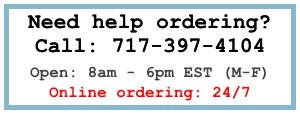Insect Repellent Soap Recipe
On this page, I will be sharing with you my own all natural insect repellent soap recipe. For this batch, we will be using my natural bug repellent essential oil blend that includes citronella essential oil, eucalyptus essential oil and tea tree essential oil. Citronella essential oil is the key active insect repellent within this recipe. If you have never tried citronella essential oil as a bug repellent, you need to. It works wonderfully! Of course, eucalyptus essential oil and tea tree essential oil are also known to repel bugs and, as an added benefit, their addition makes this batch smell very nice!
If you want to start making, using or selling an all-natural insect repellent soap, you must try this insect repellent soap recipe. I think you will like it!
This recipe will produce a 5 pound batch of soap and will fit perfectly in our 5 pound acrylic soap mold or 5 pound wooden soap mold. Which type of mold you use is up to you!
Below you will find a picture of our finished soap. Doesn't look too fancy, but boy will it bother the bugs!
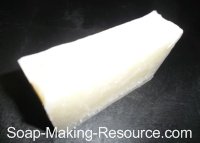
Get the Kit! (Out of Stock)
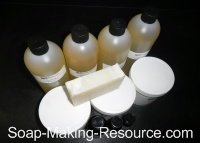
Get the insect repellent soap recipe kit today and make this all natural DEET free insect repellent soap right in your kitchen. The kit will include 32 ounces of olive oil, 16 ounces of almond oil, 13.5 ounces of coconut oil, 13.5 ounces of palm oil RBD, 13.5 ounces of palm kernel oil, 16 ounces of castor oil, 2 ounces of citronella essential oil, 1 ounce of eucalyptus essential oil, and 1/2 ounce of tea tree essential oil. This will give you more than enough ingredients to complete the 5 pound bug repellent soap recipe batch as explained in the tutorial below. Please keep in mind that you will need to provide the lye and distilled water. Lye can be picked up at most local hardware stores and distilled water can be purchased at any grocery store.
I also encourage you to pick up a Soap Making Resource 5 pound acrylic soap mold or Soap Making Resource 5 pound wooden soap mold. Our 5 pound molds are the perfect size to fit this batch!
All of our soap making kits come complete with full written instructions as well as contact information for my personal source for lye. So, if you can't find lye locally, you will know exactly where to purchase it! This information alone is a great value!
Insect Repellent Soap Recipe Kit: $54.45 Out of Stock
This insect repellent soap recipe kit does not include lye or distilled water. Lye can be purchased at many local hardware stores and distilled water can be purchased at your grocery store. Keep in mind that we will provide you with contact information for my personal lye source, so if you have trouble finding lye locally, you will have an alternative source to order from. This information alone is a great value!
* All ingredients within this recipe are also available to purchase in bulk right here at soap-making-resource.com.
The following is my exact insect repellent soap recipe formula that we will be using for this batch:
- Olive Oil = 20.85 Ounces (39% of total oils)
- Almond Oil, Sweet = 11.5 Ounces (22% of total oils)
- Coconut Oil = 11 Ounces (21% of total oils)
- Palm Oil, RBD = 5 Ounces (9% of total oils)
- Palm Kernel Oil = 2.65 Ounces (5% of total oils)
- Castor Oil = 2 Ounces (4% of total oils)
- Citronella Essential Oil = 46 grams (1.62257 Ounces)
- Eucalyptus Essential Oil = 21 grams (.74074 Ounces)
- Tea Tree Essential Oil = 8 grams (.28218 Ounces)
- Distilled Water = 20 ounces
- lye = 7.483 ounces (212 grams)
*This recipe has a 5% super-fat.
*All measurements are weight measurements, not liquid measurements.
Below are all the steps for making my insect repellent soap recipe with plenty of pictures to help you along the way. I hope you enjoy it!
Steps 1) first, let's create our lye solution. Measure out 212 grams of dry lye into a heat and chemical safe container. Be sure to measure as accurately as possible here!
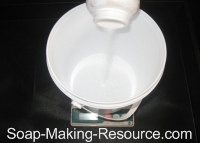
Now measure out your distilled water. As with all soap recipes, be sure to use distilled water, not tap water. Weigh out 20 ounces of distilled water, also into a heat and chemical safe container.
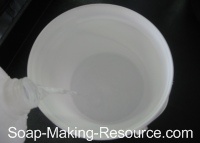
Finally, pour your measured out lye portion into your distilled water to create the lye solution. Remember to always pour your dry lye into the water and never the water into your lye.
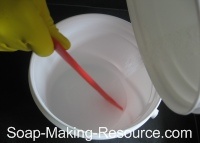
Always remember to create your lye solution in a well-ventilated area and away from children and pets. Be aware that as you create your lye solution, a strong fume will be present and your lye water mixture will heat up substantially.
Once your lye solution is made successfully, set a thermometer into it and set the solution safely off to the side to cool down as we prepare the other ingredients within our insect repellent soap recipe batch.
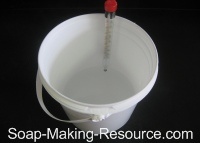
Step 2) Next, we are going to measure out our soap making oils needed for our insect repellent soap recipe. Weigh out all your oils according to the insect repellent soap recipe as described above. Be sure to weigh everything accurately!
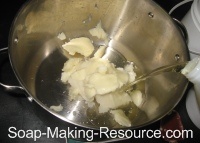
Once all your oils are measured out, melt them down to a liquid form by placing your pot on your stove top. Be sure to use a low heat setting as you don't want to scorch your oils!
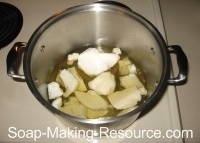
Step 3) While the oils for our insect repellent soap recipe are melting and the lye solution continues to cool down, we are going to prepare our additives.
In this batch we are going to incorporate my insect repellent essential oil blend using Soap Making Resource pure grade essential oils. In separate dishes, measure out 46 grams of citronella essential oil, 21 grams of eucalyptus essential oil and 8 grams of tea tree essential oil.
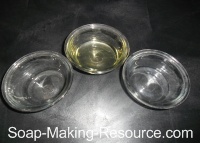
I like to initially measure out each of my essential oils within a blend into separate dishes and then, once accurately weighed, combine them all into one container.
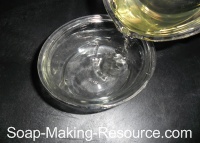
I do this so that if I accidentally over measure one of the essential oils in a blend, I can always draw some out using a pipette. Obviously, this could not be done if you are measuring your essential oils into other essential oils as they will instantly be mixed together and you won't be able to draw out your over-poured ingredient.
You may also notice that we are measuring our essential oils in grams instead of ounces. We do this because the gram is a very small and, consequently, very accurate unit of measurement. Keep in mind that there are about 28.35 grams in an ounce, so if you want to measure in ounces, you can easily make the conversion for yourself.
Step 4) During the time it took us to prepare our essential oils, your oils have most likely melted down completely. If so, take your soap making oils off the burner and set a thermometer into the mixture.
By now, you will also notice that your lye solution has cooled down substantially.
We need to lower the temperature of our oils mixture and, if needed, our lye solution to below 100 degrees Fahrenheit. At this point, if your lye solution is already cooled down to below that temperature, just place it off to the side for future use.
|
Sign Up Today!
*Your information is SAFE with us! |
Place the oils mixture and, if necessary, your lye solution in a sink filled with ice water to cool down them down as seen in the picture below...
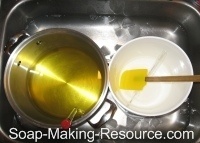
Step 5) At this point, your additives are prepared to be integrated into your insect repellent soap recipe and your lye solution and oils mixture have been cooled down to below 100 degrees Fahrenheit. We are finally ready to make soap!
First, carefully pour your lye solution into your melted soap making oils while stirring manually with a heat and chemical safe mixing utensil.
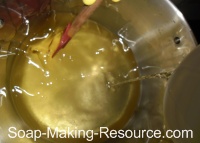
Keep stirring manually until your batch has an even color and texture.
Next, begin mixing with your stick blender.
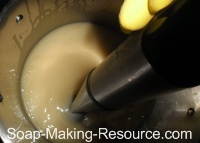
Keep mixing until you reach a light trace. You can test for trace by dribbling a small amount of "soap batter" onto the surface of your batch. If the soap sits on the surface of your batch for a few moments before sinking back into the rest of your mixture, you have reached trace. The consistency should be that of a thin pudding!
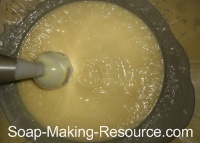
Now pour in your pre-measured essential oils and stir them in until you once again reach an even color and texture.
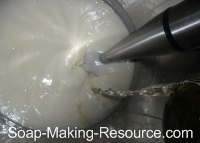
Step 6) Pour your finished soap into your Soap Making Resource 5 pound acrylic log soap mold.
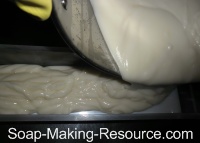
Step 7) Allow your soap to set in the mold for about 24 hours or until it adequately solidifies. Once solid, remove your loaf of soap from the mold. As you can see in the picture below, it is very easy to remove your soap without any damage to your finished product when using a Soap Making Resource acrylic soap mold.
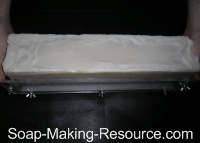
Step 8) Next, slice your log of soap into bars. As you can see in the picture below, I am using Soap Making Resource's wire soap loaf cutter.
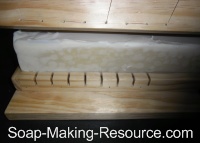
Alternatively, you can use Soap Making Resource's guided soap loaf cutter to slice your loaf into bars.
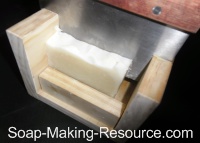
Step 9) Now place all of your soap bars on a rack to cure.
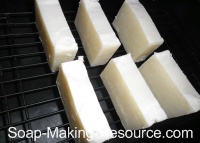
For best results, you should allow your bars of soap to cure for about 6 -8 weeks. This extended cure time will allow a lot of the excess water to evaporate from you bar, leaving you with a hard and long lasting product that offers a superb lather.
Step 10) Enjoy your all natural insect repellent soap and stay bug bite free this season!
I hope that you all enjoyed this insect repellent soap recipe tutorial. Be sure to try it for yourself! Don't forget, the essential oil blend found within this recipe can be used in many applications, including my lotion bar recipe batch.
Like this insect repellent soap recipe? Then pick up the kit now if you want to make this batch in your home, or you can always purchase our wholesale ingredients in bulk, right here at soap-making-resource.com.
Return from insect repellent soap recipe to the soap recipes hub page.

